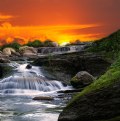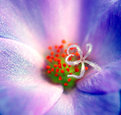| Photography Forum: Photography Help Forum: |
 |
Q. B&W Contact Printing

Asked by Mike Kovacs
(K=124) on 2/6/2002
|
I've read Nanette's article on B&W processing and I think she has me hook, line and sinker. (a chemist that doesn't do his own processing, how could it be!) The article is well-written and makes it sound SO EASY.
My question is about contact printing: what is the cheapest and easiest way to get started? I've heard of setups as simple as glass, negs in plastic, photo paper and a lightbulb, and also of using a "contact printer". Does one need a darkroom to use a contact printer? I intend to use a changing bag for loading the reels and don't have access to a suitable space for a darkroom (my bathrooms all have skylights doh!)
Coming from largely a colour slide background, I'm also a little in the dark about viewing the contact prints. Do people usually use a loupe with a clear skirt on the contact print to evaluate the results?
|
|
|
|
|
|
|

Mike Kovacs
(K=124) - Comment Date 2/6/2002
|
I guess this should be in the darkroom forum. Sorry!
|
|
|
|

David Goldfarb
(K=7611) - Comment Date 2/6/2002
|
It would be very inconvenient to do contact printing without a darkroom. See if you can cover those skylights.
You could do it with a lamp at a regulated distance from the film. Weston made all his prints this way from large format negatives. He used Azo paper (after switching from platinum), which is slower than enlarging paper, allowing for longer exposure times with this method and more control. It also has a longer tonal scale than most enlarging papers. On the other hand, if you are planning to enlarge, it might be better to use a paper more like the one you will enlarge on, if not the very same paper.
I don't recommend contact printing negs in plastic sleeves. They aren't as sharp that way, and I want to be able to evaluate sharpness from the contacts. A simple sheet of glass will do or you can use a contact printing device designed to hold the film nice and straight. I usually use an old split-back frame designed for contact printing large format negatives. There are also contact printers that have a box with light bulbs underneath, each on a switch for local control, a sheet of glass on which the negs are placed, then the paper face down on that, and there is a spring lid that holds the sandwich down.
Indeed, you can evaluate your contacts with a loupe with a clear skirt. I like the new Schneider 4x.
|
|
|
|

Nanette Staph
(K=632) - Comment Date 2/6/2002
|
well, without a light tight room, and light control you wont be able to get any discernable quality from your contact prints....but maybe thats fine for your purpose. is this just to print them to easily see what the negative is? if so, minimal equipment is probably fine. remember to seal off all the light in the room and wait 5-10 minutes...if you can still see your hands, then the room isnt light-tight. make sure all reflector material is covered, as this will just exposure your paper (eg mirrors). other than that, you may just want to use black material, backed with heavy-duty black garbage bags to seal light out.
many people will simply use a piece of glass for contact printing instead of a "contact printer"
|
|
|
|

Nigel Smith
(K=3834) - Comment Date 2/6/2002
|
I used to do this sometimes when I couldn't be bothered getting my enlarger out of the cupboard and setting up. Our bathroom has a skylight (and an exhaust fan) and even though I covered the skylight I still had to wait until nightfall to do any printing because the exhaust fan let too much light in (a tiled roof is not very light tight!) so by covering your skylight and 'printing' after nightfall, I think you'll get a dark enough room. I lay a towels across the door to block that area, but do as nan suggests, wait 5-10 minutes in the darkened room before making a judgement as to how dark is really is.
To do the contact prints I used the room light which happened to be a bare 60W bulb (we're selling the house and I had to purchased a new light fitting to make it look nice) with the contact printer (for 35mm) or paper/negs/glass sandwich (for MF) directly under the light. The light is about 2 metres off the floor and I decided the time it took me to say "one cat and dog" (about 1.3secs) was the right exposure. I would recommend a much lower wattage bulb to lengthen the exposure time to something easily repeatable. I also don't use the plastic files for contact sheets as has found them to definetly be less sharp.. yes I did tests, because I tried it that way after reading that you could and the results were less than satisfactory. Best to do it each way and judge for yourself!
|
|
|
|

Mike Kovacs
(K=124) - Comment Date 2/6/2002
|
Yes Nanette I just want something to evaluate my negs. My local lab wants about $4 for a single contact sheet which seems to eliminate the whole point of processing myself.
I'll have to see about darkening one of our 3 bathrooms. The wife is not going to like this!
|
|
|
|

Nigel Smith
(K=3834) - Comment Date 2/6/2002
|
3 bathrooms! how many heads has she got ;) Sell it to her that she doesn't have to clean one, you'll look after it :)
|
|
|
|

Charles Morris
(K=5969) - Comment Date 2/6/2002
|
There is a pretty simple way to darken the rooms in most cases. most windows have a recessed sill and most skylights have either a "scuttle" leading up out of the room, or have a framed diffuser that sticks down into the room, either way thats an edge you can use to tie something to or press something into.
the recessed openings are the simplest. you can cut a pieceof light plywood or masonite. i prefer the masonite/tempered hardboard myself since i can get it in 1/8" thicknesses. measure the openings you wish to cover and cut this board to an exact fit minus about 1/8 to 1/4" around the edges. then get some edge molding or firring material. all you need is about half inch square material and glue that to the face of the masonite right next to the edge. once the thing is finished you can apply a layer or two of self-adhesive weathersealing foam tape to the outside edges of this contraption. if you want to get fancy, screw a couple of cabinet knobs on one side of this thing to make it easyto remove later. basically the board coevers the openings in question (window, vent, skylight whatever...) and the foam tape compresses around the edges forming a gap-filling light seal, and the fact that this stuff is springy it provides enough friction to hold it in place fairly well.
these panels store in a pretty small space and are non destructive so the wife will nto wig out on you for covering her windows with foil and painting everything in the room and the hall outside it black.
this is cheap and you can do it with pretty basic hand tools. if you wanna cover the walls with something dark, try black dyed muslin from the fabric store and just install small hooks in the room near the ceiling so you can hang up small rods to support the muslin. way less annoying to the spousal unit than black paint.
2cents@large
|
|
|
|
|
















